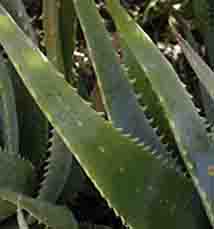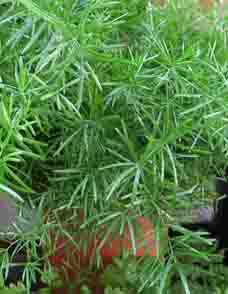Quicklinks to plants toxic to dogs information
LIST | PLANTS A TO C | PLANTS D TO N | PLANTS O TO Z | Q&A
Summary:
Details and an alphabetical list of plants toxic to dogs can be found on the next 3 pages. While we have tried to make the list as complete as possible, it is impossible to capture the thousands of plant varieties. If you have a specific question about a plant, please fill out the form on our dog plant poison question and answer page. If you suspect that your dog is poisoned, call your veterinarian or a dog poison hotline (888) 426-4435 immediately. If the poisoning just happened, vomiting up what went into the body is the treatment of choice. To induce vomiting use hydrogen peroxide (3% solution), 1 teaspoon (5 ml) per 10 pounds (4.5 kg) of body weight. Repeat every 15-20 min., up to 3x. Be sure to contact a veterinarian as soon as you can, before administering treatment.
List of Dog Poisonous Plants
You will find hundreds of plants toxic to dogs on the following three pages. It is impossible to capture every variety, so please consider this more of a guide. Look for related species if you cannot find a specific plant. Also try the search box as well. If you see no symptoms listed next to a plant, look for general symptoms on your dog such as irritation around the mouth, drooling, breathing problems, increased heart rate, vomiting, stomach pain, nausea and diarrhea.
A
- Aconite: garden flower with toxic roots, foliage and seeds. Causes nausea, vomiting and heart problems (increased heart rate).
- African violet
- Almond: symptoms similar to other plants toxic to dogs including diarrhea, painful abdomen, vomting.
- Aloe Vera (Liliaceae): Dog poisoning symptoms associated with aloe include urine that changes color, tremors, anorexia, diarrhea, depression and vomiting.

- Amaryllis (vomiting, diarrhea, depression, appetite loss, tremors, drooling, abdominal pain): All types of amaryllis are plants toxic to dogs. Note that this is an Easter and Christmas plant that is toxic to dogs. It causes symptoms such as gastrointestinal problems (diarrhea, abdominal pain, vomiting) as well as hypersalivation, tremors, depression, abdominal pain, excessive salivation and avoidance of food (anorexia).

- American yew: symptoms in dogs include diarrhea and vomting.
- Andromeda Japonica
- Angel's Trumpet: varied symptoms in dogs such as vomiting and nausea.
- Angel's Wings: Part of the bugmansia speciies and can cause vomiting and nausea in dogs.
- Anemone: This plant will irritate the dogs mucus membranes. The result is bleeding from the inflammation of and bleeding of the lining of the stomach (hemmorhagic gastritis), blisters, convulsions, shock and death.
- Apple: seeds can be toxic.
- Apple Leaf Croton
- Apricot (seeds): symptoms can include diarrhea, vomiting, stomach pain. Can be fatal so act fast.
- Arborvitae: Plants toxic to dogs that can cause poisoning if eaten in large quantity. Look for skin allergic reaction.
- Arrowgrasses: leaves can be toxic.
- Arrowhead vine: can cause swelling in the mouth, swallowing difficulty, breathing problems, stomach upset.
- Asian Lily (Liliaceae)
- Asparagus Fern: The asparagus fern is one of the plants toxic to dogs that causes symptoms such as diarrhea, vomiting, gastric problems such as stomach upset and allergic dermatitis (dog skin inflammation)

- Atropa belladona: the entire plant, especially the seeds and roots can be toxic to pets.
- Australian Nut
- Autumn Crocus: This poison plants dog causes problems such as organ damage, bone marrow problems, vomiting with blood, diarrhea and shock. It can also irritate the dog's mouth. Can cause death in dogs.
- Avocado (pit and fruit): Look for symptoms such as diarrhea, vomiting, breathing problems. Can cause death if not treated.
- Azalea: Symptoms include weakness, upset stomach, drooling, heart failure, depression, possible coma. These types of poison plants dog contain grayantoxins. It can lead to death or a coma.

B
- Baby's Breath
- Balsem pair: may result in vomiting, diarrhea, painful stomach.
- Baneberry: the berry and roods of this wildflower can be toxic to dogs.
- Barilla (leaves and stems)
- Bird of Paradise (seeds or pods are poisonous): the pods of this garden flower should not be ingested by dogs. Symptoms include mouth swelling, difficulty with swallowing, breathing problems, stomach upset.
- American Bittersweet: Symptoms include vomting, painful abdomen, cramps, tremors, heart problems, breathing problems, kidney problems.
- European Bittersweet: same as above.
- Black Locust: The entire plant including teh shoots and bark are poisonous to dogs.
- Bleeding heart: The foliage and roots are poisonous in large quantities. Symptoms of these plants toxic to dogs include convulsing and skin dermatitis (irritation).
- Bloodroot: The entire plant is poisonous, with more toxins in the bark and shoots.
- Bluebell: Poisonous in larger quantities.
- Boston Ivy: Can result in mouth swelling, dogs that have difficulty swallowing, respiratory issues, gastrointestinal (stomach) upset.
- Box (leaves only): This is an ornamental shrub, with all parts toxic to pets.
- Boxwood (leaves and twigs): Causes upset stomach, heart failure, lethargy or excitability. May cause skin irritation.
- Bracken: Symptoms in dogs include Thiamine deficiency, tumors, blindness, acute hemorrhagic syndrome.
- Branching Ivy
- Broom
- Buckeye (nuts and growths): The sprouts, nuts and seeds of this tree are toxic. Symptoms may including vomiting, painful abdomen, diarrhea.
- Buddist Pine
- Burning Bush: Plants toxic to dogs and can cause vomiting, nausea and skin reactions.
- Buttercup: The entire plant is toxic to dogs, especially the leaves. Varied digestive tract related symptoms in dogs such as stomach pain and diarrhea. May cause a skin reaction.
C
- Caladium: This is a house plant, with all parts toxic to dogs. Symptoms include mouth swelling, swallowing problems, respiratory issues, gastrointestinal upset.
- Calico Bush: Toxic to dogs in larger quantities.
- Calla Lily: Same symptoms as caladium.
- Caper Spurge
- Cardinal Flower
- Carolina jessamine: This ornamental plant has flowers and leaves that are poisonous to dogs.
- Castor Bean (leaves and seeds): The toxin in castor bean is ricin, which can cause abdominal pain, loss of appetite, diarrhea and vomiting. A severe case can lead to death, coma, seizures, tremors, muscle twitching and dehydration.

- Ceriman (aka Cutleaf Philodendron): In dogs can cause skin irritation, mouth irrtation and skin reactions.
- Charming
- Chenille Plant
- Chinaberry: can cause convulsions in dogs.
- Cherry: Symptoms may include vomting, painful stomach, diarrhea. The plant pits contain the dog toxin cyanide.
- Cherry laurel: Poisonous if larger quantities are ingested by dogs.
- Chinaberry Tree: The berries from this tree are toxic to dogs.
- Chinese Evergreen
- Chockcherries: This is a wild shrub with leaves, cherries and pits that are poisonous to dogs.
- Christmas Berry: The leaves of this shrub are poisonous for dogs.
- Christmas Rose: The Rose is a garden flower with toxic leaves and roots. Toxic if consumed in quantity.
- Christmas Tree Pine Needles (oral irritation, vomiting, diarrhea, lethargy, trembling, posterior weakness)
- Chrysanthemum: This plant contains the dog poison pyrethrin. This toxin can cause gastrointestinal problems (vomiting, diarrhea) and drooling. It can also lead to depression and coordination problems.

- Cineria
- Clematis: These plants toxic to dogs cause symptoms such as gastrointestinal tract disorders, nervous system problems. May result in dog skin irritation.
- Cocoa husks or mulch: Symptoms are similar to dog chocolate poisoning. Specifically hyperactivity, increased heart rate. Larger quantitis can result in death.
- Common privet: The privet is an ornamental shrub with toxic leaves and berries.
- Cordatum
- Coria: can cause convulsions in dogs.
- Corn Cockle: This is a wildflower with toxic seeds. Toxic if eaten in large quantitis.
- Corn Plant (aka Cornstalk Plant)
- Cornstalk Plant (aka Corn Plant)
- Cowbane: Wildflower with all parts of the plant being toxic, especially the roots.
- Cowslip: The entire wildflower is toxic, with most toxin in the leaves and stem.
- Creeping Charlie: Symptoms in dogs include vomiting, painful stomach, cramps, tremors, heart problems, respiratory problems, kidney problems.
- Creeping Fig: Can cause skin reactions in the mouth.
- Crocus
- Croton
- Crowfoot
- Crown of Thorns: see creeping charlie for dog toxic plant symptoms.
- Crown vetch
- Cuckoo pint: Plants toxic to dogs that cause nausea and vomiting. Also can cause dog skin allergy.
- Cutleaf Philodendron (aka Ceriman)
- Cycads: (Sago Palm, Cardboard Palm) This entire plant is toxic to dogs, with the most toxin in the seeds. Symptoms associated with ingestion of this plant include liver failure, seizures, vomiting, diarrhea and depression.
- Cyclamen: The roots of this plant contain cyclamine, a dog poison. Symptoms including gastrointestinal problems (diarrhea, vomiting), excessive salivation, heart rhythm problems, and vomiting. In some cases it can cause seizures and death.

References Plants Toxic to Dogs:
Note: No list of plants and other substances can be complete. This page is only intented to be a guide.
